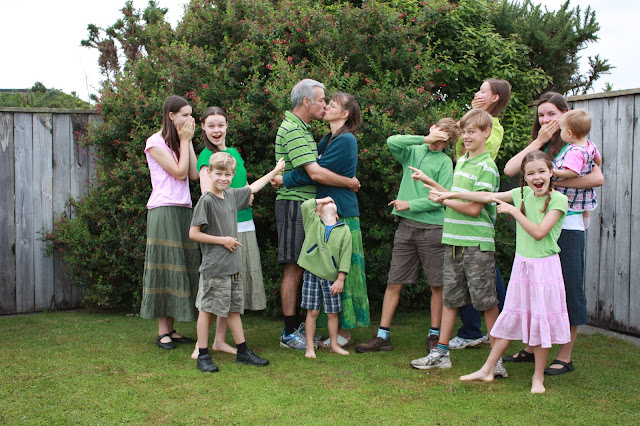 Today, I’m going to touch on the aspect of colour in photos, and in particular the way one colour contrasts or compliments another and the effect this makes.
Today, I’m going to touch on the aspect of colour in photos, and in particular the way one colour contrasts or compliments another and the effect this makes.Colour wasn't always a part of photography. Originally, photos were only black and white. The world of colour was out of reach.
However, as technology developed, people figured out how to record colour. Today, colour is a vital part of photography. While black and white photos still exist and play their part, colour photos are predominant.
So, how can we utilise this colour in the world around us in our photography? This post has some theory and tips concerning utilising colour in photography. Enjoy.
Colour can be utilised in many ways to add beauty or contrast to a photo. Warm colours (such as reds, yellows, light produce a warm, happy, cozy feeling while cool colours (primarily blue and green) portray a more calm or sad sense.
browns, etcetera)
On the other hand, dark colours produce a dramatic, rich, contemplative feeling while lighter colours a more happy, extroverted, airy one.
browns, etcetera)
On the other hand, dark colours produce a dramatic, rich, contemplative feeling while lighter colours a more happy, extroverted, airy one.
When a colour relates to another colour in a photo, photographers call this ‘juxtaposition’. It is true that the term ‘juxtaposition’ can refer to other relationships in the photo that are not colour, but for the purpose of this post, ‘juxtaposition’ refers to the relationships of colours in a photo.
One colour set against a very different colour tends to highlight the other. Green and red are often used together, as in Christmas decorations, because of their contrast. That’s juxtaposition. In this post, I’ll touch on several relationships between colours.
I’m sure you all know about the RYB (red, yellow and blue) primary colours and have seen a colour wheel at some point in your life. Certain relationships between colours are called ‘colour schemes’. These can be easily illustrated with a colour wheel.
Photos that utilise colours which are on opposite sides of the colour wheel are said to have a complimentary colour scheme. Think the red and green of Christmas. Other complimentary colours are yellow and purple; blue and orange. Given that they are so unlike one another, complimentary colours create a lot of tension and contrast in an image, but at the same time highlight (or ‘compliment’) each other.
 |
In this photo, the blue of the sky compliments the orange created in the sunset. In addition, the dark colours help to create a dramatic, rich, contemplative feeling as I was talking about earlier.
|
When you select a scheme of colours that are next to each other in the colour wheel, this is called an analogous colour scheme. An analogous colour scheme tends to create a sense of unity in the image as the colours are somewhat ‘similar’.
 |
Here the blue of the sky, the yellow of the sun and the green of the wind break create an analogous colour scheme.
|
Three different colours that are an equal distance from each other make a triad of colour. The primary triad is made up of blue, yellow and red while the secondary triad incorporates green, orange and purple.
A triad made up of the pure colours (or ‘hues’) of a triad create a sense of boldness or confidence. As these colours fade from their pure hues, this sense of boldness lessens, but the relationship is still there.
 |
In this photo, the blue plate, the orange/red leaves and yellow leaves create a primary triad of colours.
|
Colour can be juxtaposed without sticking to one of these colour schemes. Any colours that are both different from one another and relate to each other create juxtaposition.
 |
Here the white flowers are juxtaposed against the surrounding purple flowers and green background.
|
Colour can also be utilised without a colour scheme. One dominant colour can be used to create an effect. The green of grass could give a feeling of vibrance and life, or the red of this book one of reflection or comfort.
On the flip side of the coin, photos saturated with different colours can be juxtaposed to create a vibrant effect, as in these autumn leaves.
When I go out to take photos, I don’t usually ‘set things up’ to get a great colour scheme. Occasionally I do this to some extend, but usually I just look for what colours are around and use them. If I see a colour that will contrast the subject of my photo in a way that will enhance the image, I’ll add it in.
So my advice is to be aware of colour schemes and how various colours ‘fit together’ and then, when you’re out taking photos, try to include some sort of colour scheme. Can you see a triad of colours? Is there an analogous colour scheme at work in your photo? Is there a dominant colour or is it scattered with many different ones? Is there any way that you can utilise these colours better? It takes practice to see and use colour, but the outcome can be some pretty nice photos.
Autumn is a great time to take photos strewn with colour as leaves turn all shades of red, orange, yellow and brown. This can be juxtaposed against the blue sky, the yellow sun or any remaining green leaves to create images full of colour.
Flowers also have a great diversity of colours, some which are analogous to one another, but others that contrast or compliment their neighbor. Whenever flowers are in full bloom is a good time to find triads of colours in nature. I always make it my goal to do a photoshoot of flowers around my family property when they’re in bloom.
In winter, the diversity of colours is not so great as the plants are ‘asleep’ but one can create contrast between the white of any snow that falls and any other colour that is around like the green of evergreens, or the bricks/outside cladding of your house.
However, one does not need to look in nature alone for photos to take. Shop fronts, parking lots, playgrounds, house appliances, clothes and many other man-made things are strewn with colour waiting to be captured. I tend to take more photos of nature because I live out in the beautiful middle of nowhere and thus it’s easier to do so, but colour abounds almost everywhere.
Finally, if you’ve looked everywhere else and you just can’t find any contrasting or similar colours around, look at the diversity of colours in vegetables. Go to Subway, choose all the fillings, and photograph your meal. Not only will you get a photo full of colour, you’ll also get a healthy meal, a pat on the back from Bonnie, and have the power to make your friends’ mouths water. What more could you want?
Bibliographical Note: For help with technicalities in this post I revisited the course I took to learn photography, Learn and Master Photography by Vince Wallace. I recommend the course to all.
Philip Sampson is a Christian homeschooled teenager from a large family of ten who lives in New Zealand (hence ‘colour’ spelt as it is). He enjoys studying the Bible, theology, ministry, family and languages as well as writing and photography when he gets the time (which is not all that often). He is currently studying Koine Greek at Laidlaw College while he finishes off several homeschooling subjects as (hopefully) the beginning of a Batchelor of Theology. He thinks that he’ll end up somewhere in the realms of ministry and business management but isn't quite sure exactly what yet.

















































